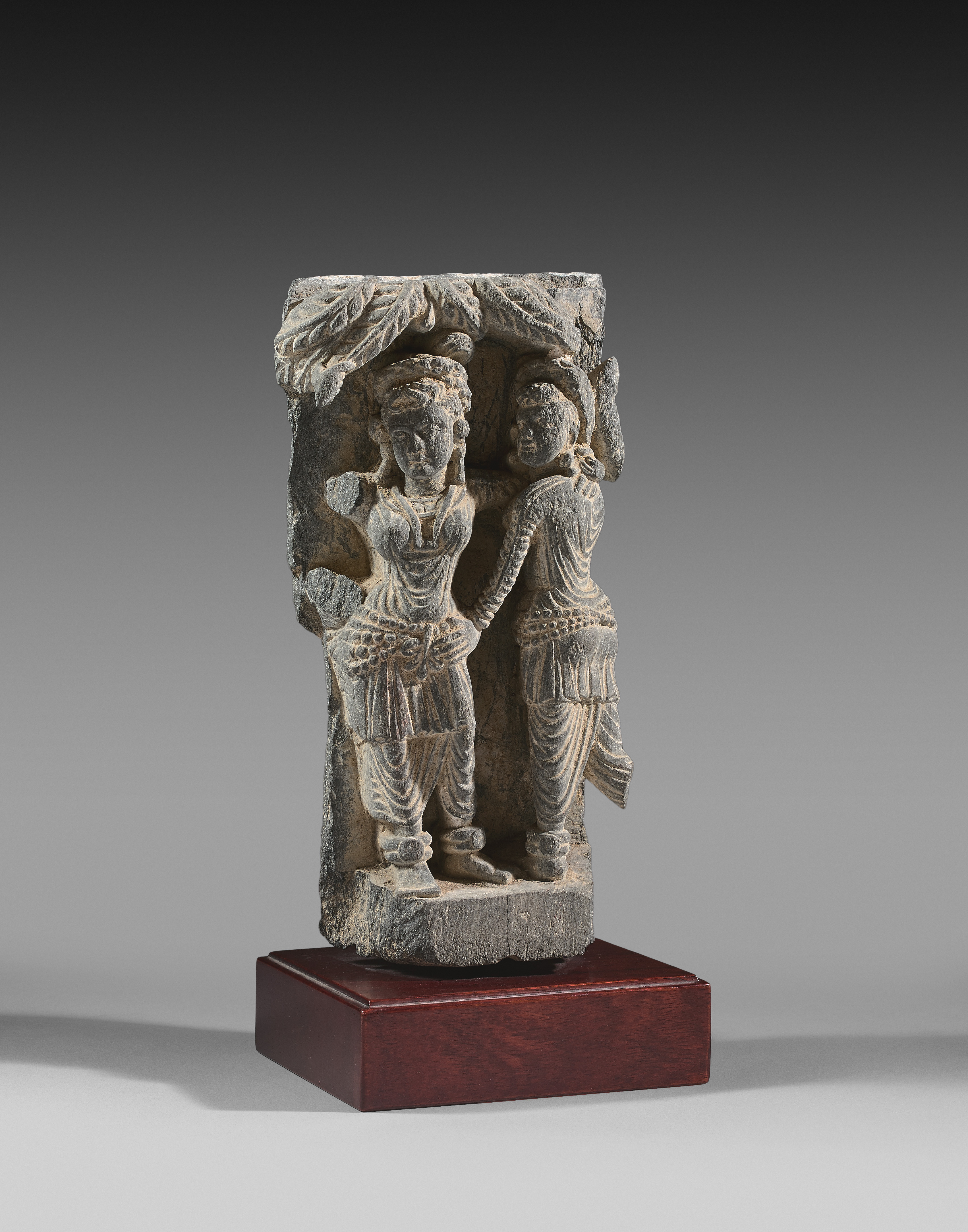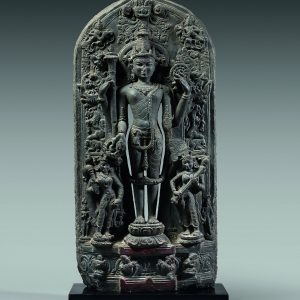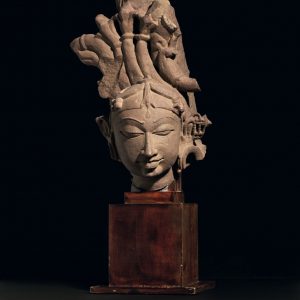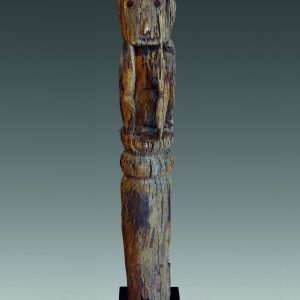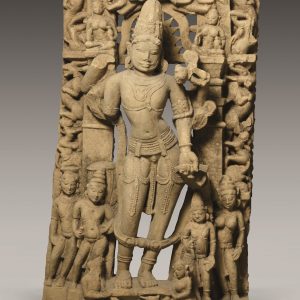Birth of the Buddha
Schist
Ancient region of Gandhāra (Northern Pakistan)
3rd – 4th century
H. 19.5 cm or 7 ¾ in
Description
Frieze from the ancient region of Gandhāra, made of schist, dated back to the 3rd-4th centuries and measuring 19.5 cm high (or 7 ¾ in). The lovely scene depicts the Queen Māyā giving birth to Buddha Śākyamuni, the historical Buddha.
As the classic iconography suggests, the scene takes place in Lumbinī where Māyā – Buddha’s mother – is depicted grasping a branch of the śāl tree with her right hand, which has been preserved and is still visible on the foliage. From her right side comes out the future Buddha: this relief was once to represent Indra who wrapped him in a cloth. On the right, Mahāprajāpatī offers support to her sister, and gently touches her stomach, as if to relieve her.
Both characters are rendered with great naturalness and one can only admire the fluidity of the lines and movements. The pose of Māyā, slightly swaying, is very elegant and her face, well preserved, amazes by the feeling of great humanity that emerges from it.
The two sisters are dressed in loose trousers (chalana) and over them are short tunics with tight long sleeves, reaching to their knees. The drapes, whose rendering is inherited from Hellenistic art, are of remarkable strength and vitality. Both women wear beautiful and typical Indian elaborate headdresses with wreaths upon their head. One must also focus on the many jewels sculpted with precision and naturalism: beaded belts, heavy anklets and necklaces as well as sophisticated earrings.
A wonderful characteristic of Gandhāran art is this dual influence of classical Mediterranean art and Indian art, that lends this work charm by giving it a strong aesthetic feeling and immense historic value.
Many comparable examples exist: one frieze is kept in the collections of the Guimet Museum in Paris and shows Māyā in the same pose with uncrossed legs (AO 2917), another one belongs to the Victoria & Albert Museum in London and depicts the same type of clothing and jewellery (IM.109-1927).
Provenance: Private European collection

